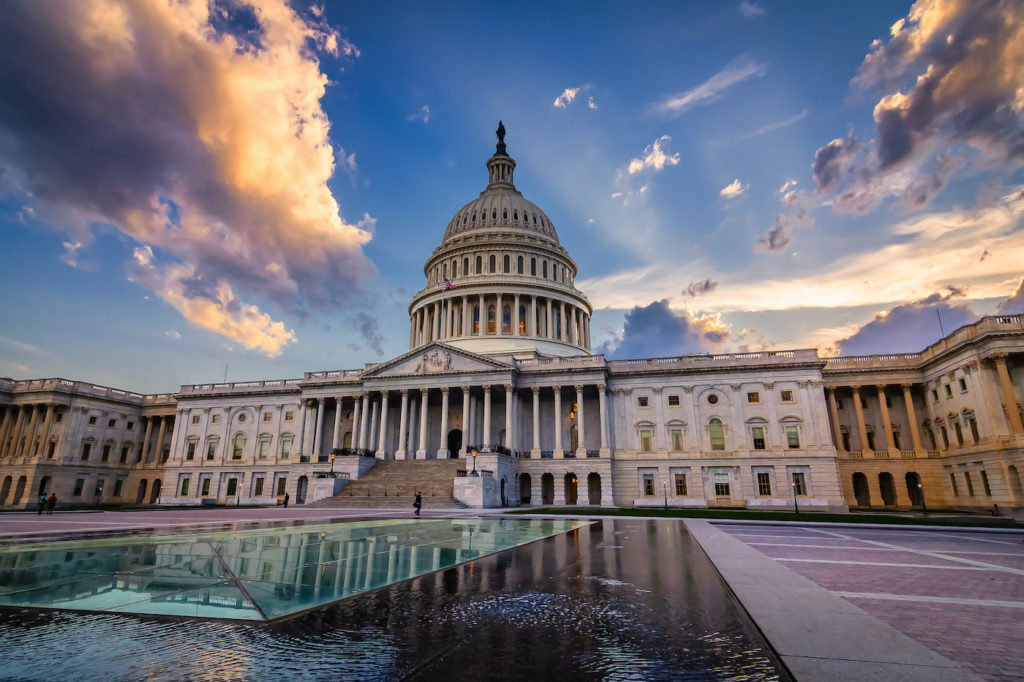Benjamin Disraeli, one of the most prominent prime ministers of Victorian England, captured his countrymen’s anxieties during the 1840s with an arresting passage in his 1845 political novel, Sybil. England, he wrote, had become
Two nations; between whom there is no intercourse and no sympathy; who are as ignorant of each other’s habits, thoughts, and feelings, as if they were dwellers in different zones, or inhabitants of different planets; who are formed by a different breeding, are fed by a different food, are ordered by different manners and are not governed by the same laws: the rich and the poor.
The social dislocation wrought by population growth, urbanization, and the industrial revolution posed what Thomas Carlyle called “the condition of England question.” Had the country somehow taken a wrong turn? Challenges to Christian belief among intellectuals, and increased religious indifference among an unchurched populace, framed the problem that Victorians struggled to address in moral terms.
Many of the concerns Disraeli and others expressed during the “Hungry Forties” resonate today. The gap between the successful and those left behind involves human sympathy more than material conditions. Michael Lind’s The New Class War: Saving Democracy from the Managerial Elite directly addresses present trends in the United States, and in other developed Western societies, in a stinging indictment of technocratic elites. Less as a split between rich and poor, he sees the real divide as that which separates trained, credentialed managers from the wider, non-university educated public whom they manage. From this division follow economic inequality, public alienation from institutions, and a populist backlash.
Start your day with Public Discourse
Sign up and get our daily essays sent straight to your inbox.Lind’s viewpoint is unique. A sharp critic of movement conservatism, he has seen it from the inside as a protégé and research assistant to William F. Buckley, Jr., and then as executive editor at the National Interest. His egalitarian, Middle American ethos sets him apart from the establishment’s thinking, and allows him to give a sympathetic hearing to those whose faith or moral values he does not share. Lind combines socially and culturally liberal positions, which favor personal emancipation, with a vision of national economy that he draws from Alexander Hamilton and Friedrich List. The latter put him out of step with the centrist opinion of the 1990s that favored globalization, epitomized by the Washington consensus of market liberalization, transparency, and public spending constraint. The growth of resistance to that agenda has opened a space for a range of contrary opinions, which include Lind’s argument for democratic pluralism.
The Class Tensions of the Industrial Revolution and the Resulting Social Settlement
Quoting James Burnham’s adage that “only power restrains power,” Lind frames present discontents around the tensions that first arose in America in the late nineteenth century out of industrial capitalism. By that time, large enterprises, run by salaried managers rather than owner-operators, had come to dominate manufacturing and related sectors. While Lind does not cite the book, Alfred Chandler’s The Visible Hand: The Managerial Revolution in American Business makes a similar point, tracing a story about changes that reached beyond the economy. Industry may have generated work and wealth, along with a wider range of consumer products, but it also concentrated power. In the twentieth century, class conflict, exacerbated by the pressures of two World Wars, divided societies until a settlement rebalanced the equation.
The economic part of the settlement that Lind describes involved “a state-brokered system of bargaining over wages and working conditions, among employers or employer associations and independent trade unions, compatible with representative democracy.” Mass-membership parties, with accountability up and down their structures, filled an equivalent political role. American Progressives, Lind notes, held politicians in contempt, while idealizing purportedly nonpartisan civil servants, “who would apply expertise in social science to the making of policy in the public interest.” They accordingly treated the public as subjects to be administered rather than as citizens who governed themselves. Politicians, who could not ignore constituents without losing office or the support that gave them influence, put a check on both oligarchs and the administrative state.
Lind also discusses how religious and civic groups, whose leadership came from the communities they served, gave their members a voice in culture and education. The Catholic Legion of Decency imposed a check on Hollywood by rating films; local Protestant groups imposed community standards on schools and libraries. They restrained both mass media that rewarded “sensationalism, obscenity, and violence” to turn a profit, and elites that imposed their own preferences or intellectual fads. Far from seeing these efforts as censorship or small-mindedness, Lind sees them as democratic participation that gave individuals and families more power—more than merely the choice to reject offensive material.
The Neoliberal Revolution
The settlement was dismantled in the later twentieth century by what Lind calls a neoliberal revolution from above. Deregulation removed constraints on business that had benefited workers. The offshoring of production and immigrants’ entry into domestic labor pools weakened native workers’ position. On matters beyond economics, judicial review “usurped much of the former authority of legislatures,” thus curtailing voters’ power to check the government through elected representatives. Neoliberals were able to push aggressively a “counter-majoritarian, rights-based liberalism” that became antidemocratic. Elites withdrew from cross-class membership organizations and associated instead with nonprofits, which were themselves staffed by university graduates and funded by wealthy donors. These nonprofits in turn sought no longer to cooperate with a cross-section of fellow citizens, but rather to do things for or to them. The people did not respond with humble gratitude.
Neoliberal elites, Lind argues, pushed their pro-market economic policies and anti-traditionalist social policies against the wishes of the working class. The latter sought, not a more open society, but “a combination of economic and cultural protection” against the changes that had disrupted their lives. Having been denied both that protection, and much of the voice in public affairs that they had enjoyed since the 1940s, workers and other losers in the new class war rebelled. Lind frames “demagogic populism” as a symptom of the disease of technocratic neoliberalism, the cure for which is a return to democratic pluralism.
But Lind’s analysis overlooks many factors, including cultural and intellectual ones, that explain a lot of the present discontents in the United States and other Western societies. Moreover, his description of the pre-neoliberal settlement may be idealized, and stands open to challenge on its details.
Many of the deregulations that he links with neoliberalism were generally welcomed. Some dismantled obsolete structures that had directed production and supply of raw materials, measures that worked better during the two World Wars (when they were created) than in peacetime. And hardly anyone misses price controls, which were abandoned in the 1970s, or the barriers to entry that hurt entrepreneurs and small businesses. Lind shows a disdain for entrepreneurship that stands open to challenge, and the corporatism he proposes seems as open to being captured by elites as the present order. The experience of America and Britain also suggests that cooperation between big labor and big business reduces quality at the expense of consumers. The “good old system” may not have been quite as good as he suggests; restoring it seems unlikely, and even problematic.
The Danger of Demonizing Populists
Lind still makes important points about the gap that divides ascendant elites from the wider public, and about the tensions that it creates. He describes populism more as a counterculture that champions legitimate positions that are excluded by insiders, rather than as an alternative establishment set up to effect change. His likening of the current backlash to older trends in local or municipal American politics shows a key insight: crime, decaying public services, high taxes, and a general sense that urban policies operate at voters’ expense, were what drove Americans to figures like mayors Frank Rizzo, Ed Koch, and Rudy Giuliani; elite disdain only bolstered such politicians’ appeal. Donald Trump, Lind pithily observers, is more like “Da Mayor” than “Der Führer.”
Indeed, the rhetorical overkill of elites’ responses to Trump and other populists strikes a dissonant note even to many who oppose the current populism. Lind sees a danger in calling Trump and his like neo-Nazis or puppets of Vladimir Putin. Besides damaging the public’s trust in the critics who level such charges (when further reporting discredits them), these accusations distract attention from the real issues that drive popular discontent—they help elites to avoid asking themselves why their preferences face stiff resistance.
Lind effectively shows how efforts to explain populism as manipulative bigotry, or as status anxiety, are tied to other, longstanding efforts to discredit certain views as signs of mental illness. In The Authoritarian Personality (1950), Theodore Adorno and other scholars promoted the pseudoscience that gave Richard Hofstadter and others a language to decry what they called a paranoid style in American politics: they claimed that anyone who criticized technocratic managerialism was irrational and maladjusted. But to equate disagreement with irrational phobia medicalizes politics in a way that resembles how the Soviet Union treated dissidents in its later years. Lind rightly finds these efforts to be both dishonest and dangerous. Curtailing the acceptable range of public debate prevents us from engaging with pressing issues, or leaves them to be co-opted by self-interested figures.
Victorian Britain mended relations between rich and poor by a combination of efforts that addressed practical concerns, improved quality of life, and demonstrated elites’ commitment to general well-being. How then can the gap between governors and the governed be mended in America today? Recent works by Chris Arnade and Christopher Caldwell are worth reading alongside The New Class War to grasp the problem of present discontents. If contemporary populism is, as Lind argues, “a kind of convulsive autoimmune response by the body politic to the chronic degenerative disease of oligarchy,” what might be the cure? An inclusive approach to promoting general well-being seems to be a start, along with strengthening local communities to check power with power, as James Madison envisioned. Those steps require combining a moral transformation that Victorians would recognize with the material improvements that can give communities space to flourish.












